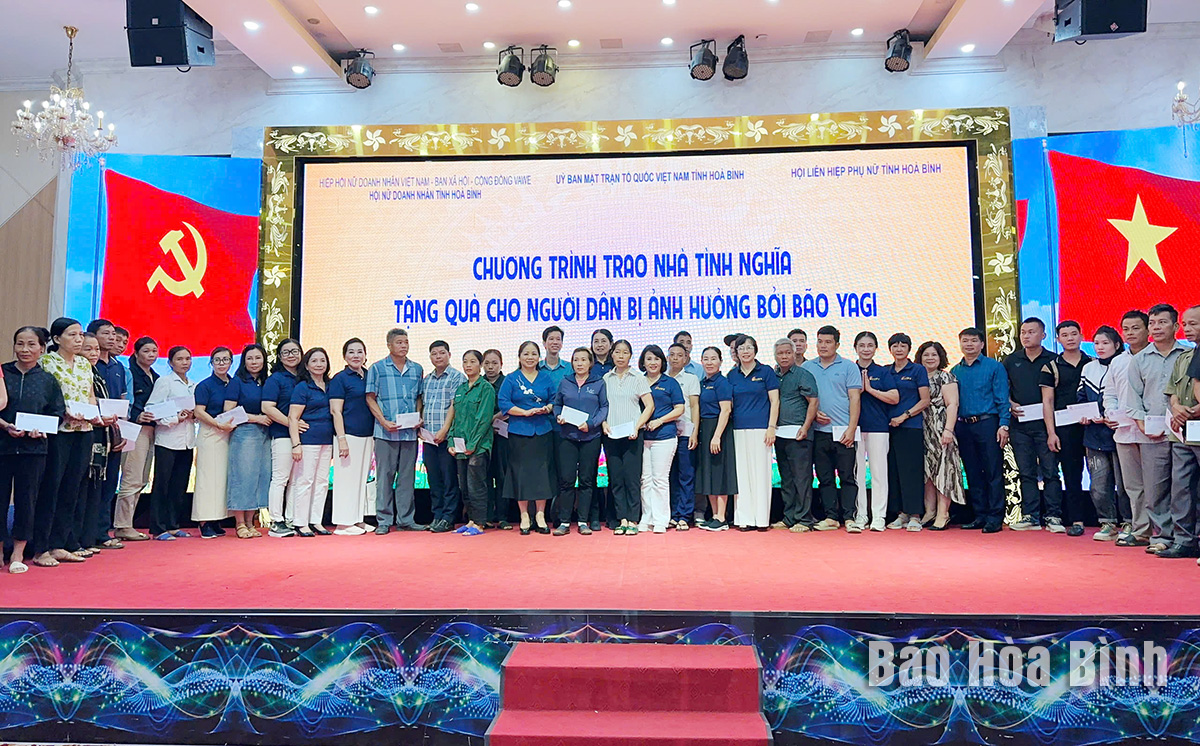Over the past years, businesses in Hoa Binh province have maintained and expanded operations, significantly contributing to local development.
The Hoa Binh Women
Entrepreneurs Association, in collaboration with the Board for Social and
Community Affairs of the Vietnam Association for Women Entrepreneurs, presents
gifts to Typhoon Yagi victims.
The COVID-19 pandemic has disrupted the supply chain, leading to material
scarcity and workforce shortages over the past four years. However, more than
4,200 businesses and nearly 600 economic organisations in Hoa Binh have made efforts
in adapting to the new situation, adjusting operation models, optimising
technology, stepping up digital transformation, and seeking solutions to boost
production and expand the market.
Thanks to joint efforts, the province has made progress in socio-economic
development, with its index of industrial production up 12.1% in the first nine
months of this year, retail sales and services revenue exceeding 55 trillion
VND (200.54 million USD), and export value up 20.7%.
During the nine-month span, businesses contributed about 70% of the province’s
budget revenue. They have created stable jobs for nearly 84,000 labourers, each
with monthly income ranging from 5.5 million to 6.2 million VND. Meanwhile,
cooperatives employ about 28,000 labourers.
They have also played an active part in social welfare, raising hundreds of
billions of Vietnam dong each year for the work.
Over the past time, Hoa Binh has implemented the Government’s resolutions and
directives on supporting enterprises, while maintaining dialogues with them to
get their feedback.
Last year, Hoa Binh ranked 23rd among provinces and cities in the
administrative reform index. Notably, it earned the 8th place nationwide in
terms of service delivery to residents and businesses regarding administrative
procedures and public service provision.
Speaking at a meeting with outstanding enterprises and cooperatives earlier
this year, Chairman of the provincial People’s Committee Bui Van Khanh urged
them to make more contributions to local socio-economic development, and
pledged to facilitate their operations.



